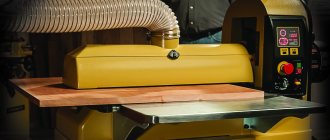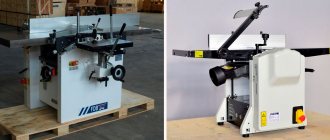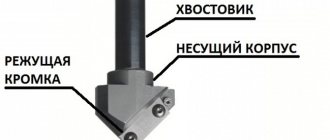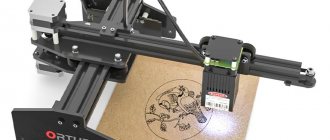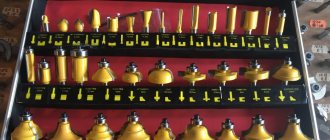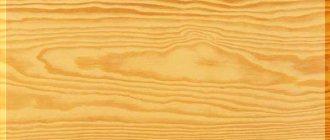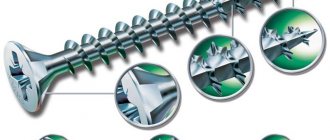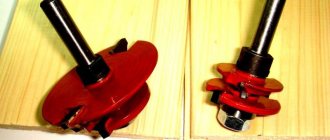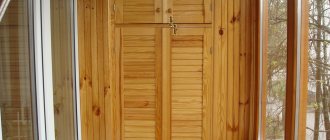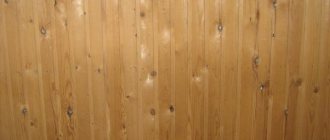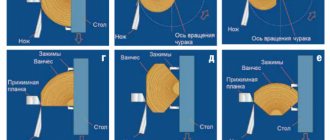Entrepreneurs in areas with forests and timber harvesting rightly believe that woodworking and carpentry can create a stable income as a business. Individual developers expect significant cost savings by purchasing small-sized, affordable woodworking equipment, for example, a machine for making lining.
The decision is quite reasonable, considering that processing wood into joinery increases its cost at least twice, and the use of wooden lining in cladding work is becoming an increasingly relevant and popular way of finishing housing and auxiliary buildings.
A machine for the production of joinery can be purchased, assembled from components for the planned volumes, and even manufactured independently.
Before you start selecting equipment or manufacturing it, you need a general understanding of the issue using the example of the industrial production of cladding boards.
Technology of industrial production of lining
The process of manufacturing lining on an industrial scale involves a number of preparatory and technological operations, a properly selected set of equipment, warehousing and storage of raw materials and products, and compliance with safety regulations:
- The wood (wisps) is cut into edged boards with a thickness of 15 to 25 mm and a width of up to 150 mm - the size is determined by the intended type of lining. Sawing is carried out on disk or band sawmills;
- Boards are brought to standard humidity in drying units, chambers and rooms in various ways. Drying is necessary to minimize waste, risks of warping and cracking of lumber;
- Upon reaching the required moisture content, the boards are sorted by quality; for the production of lining, the material is selected of the second or higher grade;
- A lining machine involves processing boards simultaneously in four planes to create a given profile. Sampling and cutting of wood occurs using cutters and knives of various shapes and sizes, usually replaceable and allowing different profile configurations to be varied;
- Finished products are inspected and then refined: large knots and wood defects are cut out. At the same time, the length of the lamella decreases, but its grade increases, and hence the selling price.
Types of wood for making lining
To decide what material to make the lining from, you need to study the characteristics of the types of wood. Whatever the quality of raw material processing, the finished product will have the same quality. Boards for lining are made from deciduous and coniferous wood.
Hardwood
Linden
According to its properties, linden is classified as a soft wood. Boards made from this material are very light and easy to process.
Birch
Birch blanks are easy to make lining. Birch has moderate hardness, uniform density, and is easy to process. Because of its textured surface, birch is preferable in the manufacture of lining for cladding walls indoors.
Alder
Softwood is used mainly for making furniture. Alder in the form of lining has proven itself to be excellent for finishing walls in bathhouses and in rooms with high levels of humidity.
Aspen
Softwood contains a small amount of knotty inclusions. Aspen boards are resistant to deformation and retain their strength properties in a humid environment. The quality of the lining made from this material is very high.
Conifers
Spruce
Wood is widely used in construction. Spruce boards are a priority raw material for the production of lining. Spruce is a universal wood - easy to saw, drill and mill.
Larch
Larch has all the qualities of spruce. Do-it-yourself lining is used mainly for cladding walls inside the house.
Pine
Cladding made of pine lining has a long service life and practically does not lose its original appearance. Like all types of coniferous wood, at high temperatures it can release tree resin. Therefore, pine needs to be painted or coated with moisture-resistant varnish.
It should be noted that there are a large number of wood species. The above list shows those types of wood that are most accessible and suitable for making lining.
Conditions and requirements for the production of lining in small volumes
Based on the principle of a large-scale industrial enterprise, mini-productions of facing boards are also created.
Basic conditions:
- The production premises must be separate and comply with sanitary standards;
- The noise of the machines should be minimal, especially if the mini-workshop is located in a building with nearby people living;
- Wood dust is an increased source of ignition, which must be taken into account when organizing production;
Depending on the power of the equipment and machines, unforeseen loads on the electrical wiring may occur; the wiring must be calculated with a reserve.
Whatever machine is used for making lining, the basic requirements must be met:
- The board in production should only be edged, the dimensions of the thickness and width of the boards should be the same;
- In addition to the main machine, it is necessary to have a double-sided surface planer or, at a minimum, a jointer in the equipment set;
- Be sure to pass the wide planes of all boards through a surface planer on both sides;
- The humidity of the blank board should not exceed 24%, otherwise it must be dried under a ventilated canopy.
Slat sizes
On your own machine you have the ability to produce lining of individual sizes, reducing the number of scraps during installation. Typical length values are within 6 m (minimum 0.3 m, increments of increasing values - 0.1 m).
The width of the step along the vertical joint of the sheet is 0.15 m. A wide wood sheet is more prone to deformation and warping. Narrow elements behave more stable.
The thickness varies: internal finishing is limited to 1.2 cm, external installation increases to 2.5 cm.
The ability to carry out individual orders for lining of the desired size, profile, material (for example, rosewood) quickly pays for the machine for production at home.
Difficult work on a simple machine
Various recommendations for novice carpenters and machine operators claim that making lining or other wood products is simple and accessible to any beginner.
In practice, it is somewhat different: carpentry work is complex by definition, and with the use of machines and special tools it is also dangerous. First, you need to study, at least in a minimal way, the theory of wood processing: direction of fibers, types of joints, grade, hardness, curl, defects and defects.
The simpler the woodworking machine for lining, the more user intervention is required to configure it and set parameters.
A general familiarization with the operation of the machine must be completed by first observing the work of the master and recording even minor nuances of installation and adjustment of knives, cutters, fasteners and protective devices.
Types of coating
Any wooden (natural or pressed) lining consists of long panels of wood, which have grooves on one side and protrusions on the other. During installation, they are connected to each other, forming a strong and inconspicuous fastening, which is also called a hidden lock. Lining can be classified depending on the material from which it is made and the profile. The panels also differ by category: extra, class A, B, C.
Photo - eurolining
Based on materials, the lining is divided into:
- Natural. It is made from various types of wood. The selected type of wood is processed and cut into boards of a certain profile. In order to sheathe interior rooms or utility rooms (baths, saunas, dressing rooms, etc.), alder, linden, larch, and oak are used. Less often - pine. The fact is that this rock, under thermal influence, begins to release resins, and this is not always convenient during operation;
- MDF. External and internal lining made of pressed sawdust is a popular finishing material. It is durable and lightweight. The coating is made from natural wood sawdust, which are combined by applying high pressure to them. Like plastic, this lining can withstand exposure to direct sunlight, but can begin to deteriorate due to steam and moisture.
When choosing boards, their profile plays a big role. It is they who determine the overall dimensions (width, thickness) and the area of use of the wooden lining. There are such profiles:
- Classic panels. A fairly wide lining that is used for covering ceilings, walls and other surfaces. It has a relatively small thickness, imitates a flat wooden beam;
- Eurolining. It often appears in the interior of private houses and apartments. The main difference from classic panels is the deeper mounting groove. It allows you to install boards in various problem areas, providing a more dense and rigid fastening. Often, only natural material is used to make such lining, so it is often used in the kitchen, bathroom and other “wet” rooms;
- Block house. This is a very unique material for wall decoration. Due to the semicircular profile, it allows you to create a stylish design for any room. This lining is sold in profiles of various lengths, so it can be mounted even in small areas (loggias, toilets, bathhouses);
- American. These panels are similar in thickness to a House block, except that they are flat. This lining is attached to floors, walls, and is used as a ceiling. In some cases, it even replaces the usual plastic siding. A notable feature is that the panels are often made from linden, larch and other sheet wood - this allows them to be used for cladding saunas, steam rooms, etc.
Photo - interior decoration of the loggia
Before sheathing the ceiling, floor or walls in a wooden house, wooden lining of a certain category is selected. As stated above, there are 4 of them in total:
- Extra class. This is the best option for the facade and interior of the building. Its production is carried out from long, strong logs, without knots or notches. This allows you to make a material with high levels of strength and beauty;
- Category A. This coating is also used to carry out various indoor work: laying panels on walls and floors, finishing the ceiling. The difference from extra is that knots and small irregularities are allowed on the surface of the boards;
- Next comes B. It has significantly worse characteristics than A. Its installation is carried out only if further painting or varnishing of the panels is planned. Not only knots and nicks are acceptable, but also traces of machining. The main advantage is its low cost - this variety is perfect for changing the color of the walls, and its price is two times lower than the two listed above.
External finishing of balconies, construction of various construction devices (“scaffolding”, “goats”, etc.) is carried out using the cheapest lining - B-class. It is sold at every second woodworking enterprise; it is considered illiquid and therefore sold at a reduced price. On the surface of the wood, nicks, falling knots, discolorations, and even signs of rot are acceptable.
Photo - block house on the facade
Preparation of the workplace
All the time, attention is paid to the work of the saw, so nothing should interfere with the process underfoot or on the table with workpieces. Finished products are neatly stacked on the opposite side of the workpieces. The simplest version of the lining machine is not intended for independent work with long workpieces.
It is very difficult to independently hold the board as it exits the cutter while pressing tightly against the ruler; there is a real danger of injury due to a violation of linearity at the ends and the need for additional effort.
Making lining from unedged boards
There is the easiest way to make profile boards for cladding vertical fences of buildings.
Using a circular saw, remove the bark and underbark from the unedged board. The board is sawn with a circular saw on both sides, creating longitudinal grooves. Make or take ready-made planks with a thickness corresponding to the size of the grooves.
The cladding is done by inserting one plank into two boards at once. This primitive cladding is used for finishing the facades of outbuildings.
Machine equipment
It is possible to assemble a lining machine from individual components only if you have the necessary technical skills. Components of the machine for home use:
- Bed: is a heavy frame with high stability and the center of gravity located at the bottom of the frame;
- Table for supporting lining made of solid steel plate with holes for cutters and spindles;
- Motor up to 5 kW with transmission from 5000 rpm to improve planing cleanliness;
- Pressure rollers to hold the workpiece in the required planes;
- Knife shaft;
- Protective cover for rotating parts;
- Switching unit with external button;
- Grounding and protective metal hose for electrical wiring.
Machines: popularity and availability
For the production of cladding boards in small volumes, the most popular, easy to use and affordable machine is considered to be a four-sided machine for making lining.
It can be used to produce high-quality eurolining with complete product readiness in one pass. In addition to lining, it is possible to produce skirting boards and platbands.
Basic selection options:
- Workpiece feeding speed;
- Machine weight;
- Possible type of lining section;
- Power;
- Number of spindles.
What is lining
The first passenger cars were sheathed using thin boards. Subsequently, the profiled finishing board began to be called lining. For the manufacture of lining, enterprises use five types of profiles:
- standard;
- calm;
- Europrofile;
- American.
Standard
The trapezoidal section of the lining with beveled edges at an angle of 300, has two longitudinal grooves on the back side. The rear grooves serve as ventilation vents. One side of the lining has a longitudinal groove. The other side of the board is equipped with a protrusion (spike). The cladding elements are connected to each other by inserting the tenon of one strip of lining into the groove of another board.
For external use, the tenon is made slightly narrower than the groove. Under the influence of moisture from atmospheric precipitation, the tenon inserted into the groove swells. The connection becomes almost inseparable.
Calm
The boards of this lining model have rounded longitudinal edges. This is a distinctive feature from the “Standard”. The stem also has grooves, tenons and longitudinal ventilation channels.
Section of the lining "Calm"
Europrofile
The Europrofile style came to our country from Western European countries. A distinctive feature is a wider spike. Lined facades made from this material have a beautiful appearance with relief differences in the thickness of the wood. Europrofile is often called Eurolining.
Eurolining
American
The profile name indicates the country of origin. The beveled edges of the lining give the impression that the boards are laid overlapping. The profile is used for cladding the facades of houses and garden buildings.
Professional advice when choosing a machine
All machines are designed for material with standard humidity. If you have a choice of machines that are approximately equal in their main characteristics, you can pay attention to the signs that determine the best model for a not very high-quality source material, including resinous:
- Feed-pressure rollers along the entire length or distributed feeding;
- Lubricant is supplied to the table continuously;
- The presence of driven counter rollers under the frame with the ability to adjust the height;
- High, sharp, spiked profile of the rollers.
Milling cutters for lining and their application
In my spare time I would always like to do something useful for myself, and some spend this time decorating their house or apartment, because creativity always brings joy.
One of the options is to independently produce the facing material, for which you will need cutters for lining on a manual router. Making wooden panels yourself to cover a room with them is very interesting and exciting.
Finger cutters for making lining with a manual router
Making lining by hand
Milling cutters for a manual router for the manufacture of lining and other products. Big set
Hand cutters for wood can be divided into bearing (or edge) and bearingless. The former are used for the manufacture of lining, and the latter are used for one-time processing of any part, but they require auxiliary equipment.
Groove fillet cutters
Cutters for making lining for a manual router can have a ratio of the diameter (D) to the radius (R) of the groove on the panel: 9.5-4.8 mm, 12.7-6.35 mm, 15.8-7.9 mm and 199.5 mm. The diameter of the shank will remain 8 mm. Such cutters can be used for lining, but they are inconvenient.
Universal cutters for making lining
Such a cutter for lining, as in the photo above, can be used both with a manual milling machine and with a milling machine, which is equipped with collets. The diameter of the cutters in this case is 50 mm and 35 mm - respectively, with a shank diameter of 8 mm.
Mounted cutters for the manufacture of lining
Such a cutter for making lining will allow you to make panels with any type of tongue and groove. The most important thing is to set up the machine correctly and select the cutter sizes in terms of depth and diameter.
Manufacturing of lining
Level one side of the board
To make lining with your own hands, you need to make smooth jointed blanks from unedged boards. First of all, make a cut along one side, and then decide on the width of the future panel.
Set the ruler to the desired width
To determine the width, pay attention to all the boards you have so that the panels are the same. Of course, there are no strict instructions with directions here, but the most optimal board size will be from 7 to 10 cm
Be very careful when jointing boards because most carpenter injuries occur during this process. Of course, they won’t cut off a hand or a finger here, but the wounds bleed a lot and take a long time to heal, although at the first moment you don’t even feel pain. To ensure that the thickness of all boards is the same, count the number of passes along the cutter - you, of course, will not achieve millimeter accuracy, but no one will notice the difference.
Advice. For processing, it is better to choose boards no more than 2 m long, since longer ones are difficult to hold and the dimensions are inaccurate. Also, shorter boards will be easier to process with a hand router.
The lining with grooves on both sides is connected by a thin strip
When cutting down a wane, sometimes quite a lot of wood remains and should not be thrown away. From this waste you can cut thin slats for connection, and make the lining with grooves on both sides.
Cutting a groove with a milling cutter
When the board is cut and jointed, all you have to do is make a tongue and groove, that is, tongue and groove it around the perimeter. Place the cutter on the machine and, by lowering or raising the table, adjust the depth of the groove. Move the ruler to the required distance and make sure that during processing the board is always pressed tightly against its edge.
Processing boards on a surface planer
And how to make lining with a manual router, because before that we paid attention to a machine, albeit portable, but still a machine. To do this, you will need a calibrated board, and this cannot be done manually - you just need to pass it through a thicknesser
Working with a hand router
The comb is made with an end mill, and its width is adjusted with washers, but it is very important that the thickness is at least 4 mm, because a thinner one will break off. But when making such shelves, it is advisable that they be captured by a clamper, and it will take no more than 6 mm. Then, using a panel cutter, remove the remainder at the top, but make sure that the straight section is at least 5 mm
Making the lining with a manual milling cutter, or rather, the other side, is done in the same way, only the chamfer is removed with a panel cutter of a smaller size.
Popular brands
There is high competition in the wood processing machine market and a diverse range of models according to purpose, characteristics and prices. Russian machines are not inferior to imported analogues and are often offered at more affordable prices.
Start 160
The machine for the production of lining of the Russian brand is just gaining popularity, but already has a number of qualities that are superior to competitors in its niche:
- Quick adjustment of the dimensions of the facing board during operation;
- The speed of rotation of the spindle guarantees high quality of the product;
- A powerful gearbox ensures reliability and accuracy of products;
- High protection system;
- The precision of the grinding process eliminates tool runout.
BEAVER
Chinese four-sided machines from BEAVER have been sold on the Russian market for quite a long time and successfully. The manufacturer constantly modifies the models and confirms their high quality.
All models are highly productive: the material feed speed is 60 m/min without loss in product quality. In addition to the production of lining, calibration of small parts is available.
HASKOVO
The machine for the production of lining from a Bulgarian company is easy to operate, some models are equipped with five spindles. Produced in Bulgaria and Austria, it has a good reputation in the European market.
Available for work without special training.
QUADRO
The experienced Taiwanese manufacturer is represented on the Russian market by a large number of models with individual, diverse differences.
For serious manufacturers, a machine has been designed for the production of lining with a maximum material feed speed of 190 meters per minute.
ZMM Haskovo 4PM 180/4
ZMM Haskovo 4PM 180/4 has all the qualities to please a person taking his first steps in woodworking.
The Austrian machine ZMM Haskovo 4PM 180/4 is an ideal choice for beginners due to a number of the following advantages:
- Convenient and easy-to-learn control system;
The photo shows a simple and clear interface of the Haskovo machine, which is quickly mastered by the operator
- Relatively light weight and size;
ZMM Haskovo 4PM 180/4 does not require large free space
- High quality of manufactured products , not inferior to more expensive and bulky models.
Specifications:
| Parameter | Meaning |
| Allowable blank width | 0.7-18 cm |
| Minimum blank length | 35 cm |
| Speed capabilities of the feeding mechanism | 12 m for 60 seconds |
| Number of revolutions made by the spindle | 6000 within 60 seconds |
| Main engine power | 7500 W |
| Table length | 1.7 m |
| Sound level | 87 dB |
| Weight | 1.9 t |
| approximate price | 300,000-350,000 rubles |
The machine as the basis for business production planning
As an approximate business calculation, you can take the Start 160 machine, as the most affordable with sufficient productivity and good technical indicators of the quality of finished products.
A four-sided machine for the production of lining “Start 160” currently costs 350 thousand rubles, the price can be considered loyal.
Calculations
The productivity of the machine should be planned according to the average speed of material supply; for this model it is 10 m/min or 1 m2 of finished lining per minute, which is about 500 m2 of finished products over an 8-hour work shift. With single-shift operation 260 days a year, the gross volume of production will be 130 thousand m2. In monetary terms, at a price of 150 rubles. per 1 m2, gross income will be 20 million rubles.
There is no point yet in making complex detailed calculations indicating all the components of product pricing, but, with an average profitability indicator, the amount of net income will be about 4 million rubles.
Even if this figure is halved, we can say that a business producing lining can bring good profits.
The costs of a lining machine, as the main equipment, according to average statistical data, make up a quarter of the costs of organizing a business.
With this averaged approach, it turns out that the payback period for the machine will be about a year.
Optional equipment
To accurately calculate a business plan, you need a lot of additional data and specific numbers.
In terms of equipment, for work, regardless of lumber suppliers, it is necessary to add a drying chamber for wood blanks to the machine kit.
A band sawmill with a performance matched to the characteristics of the main machine will help completely eliminate the influence of suppliers on the rhythm of production.
The cost of purchasing a dryer and a sawmill is approximately equal in cost to the main machine each.
Approximate calculations allow us to draw a preliminary conclusion about the profitability of the business. The machine for making lining in these calculations acts as the basis of the business, the starting point for other indicators.
Features of machines for processing lining
The price of the finished products depends on the machine on which the lining is made.
The advantages of purchasing such equipment are:
- Organizing your own business , which allows you to receive additional funds. The material can be produced for your own needs and for sale. In the latter case, the funds spent on the purchase of equipment will be returned faster.
- It is possible to control the process and quality of the panels that are obtained at the output.
- Perform other operations on machines . Using this equipment, designed for the production of lining, it is possible to produce plinths, bars and other building products from wood.
The machines on which the production of lining is carried out, the equipment for it, processes raw materials from wood having a certain width, simultaneously from four sides. In this case, the lower and upper parts of the workpiece are ground, and grooves or tenons are made on the sides of the panel, which depends on the chosen lining configuration. In the photo you can see both types of profiles.
Processing the ends of the lining with special cutters
When forming finishing materials in production, the machines are fixed quite rigidly; when installed at home, the devices are usually portable, small in size and weight. The equipment can easily be installed in a shed, garage, and can be folded or pulled out if necessary.
The main components of the machine for producing material are:
- Device for supplying raw materials for processing. The parallelism of the planes of the product depends on the accuracy of its work.
- Unit for attaching cutters for end processing. The main characteristic of the element is the speed at which the workpiece rotates. To obtain a high-quality finish, the equipment must have a rotation speed of approximately 5 thousand revolutions per minute. This figure corresponds to machines at large enterprises.
